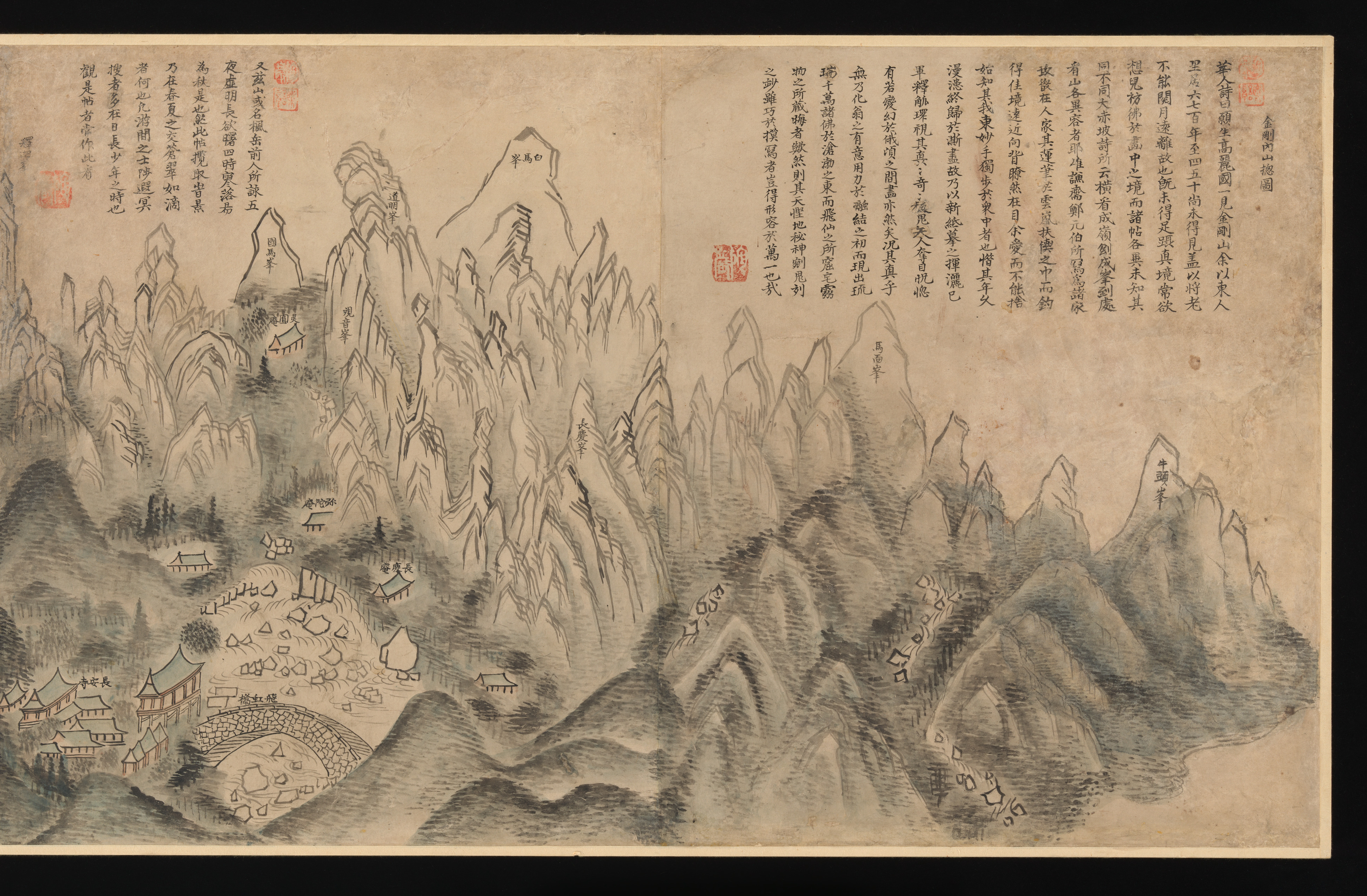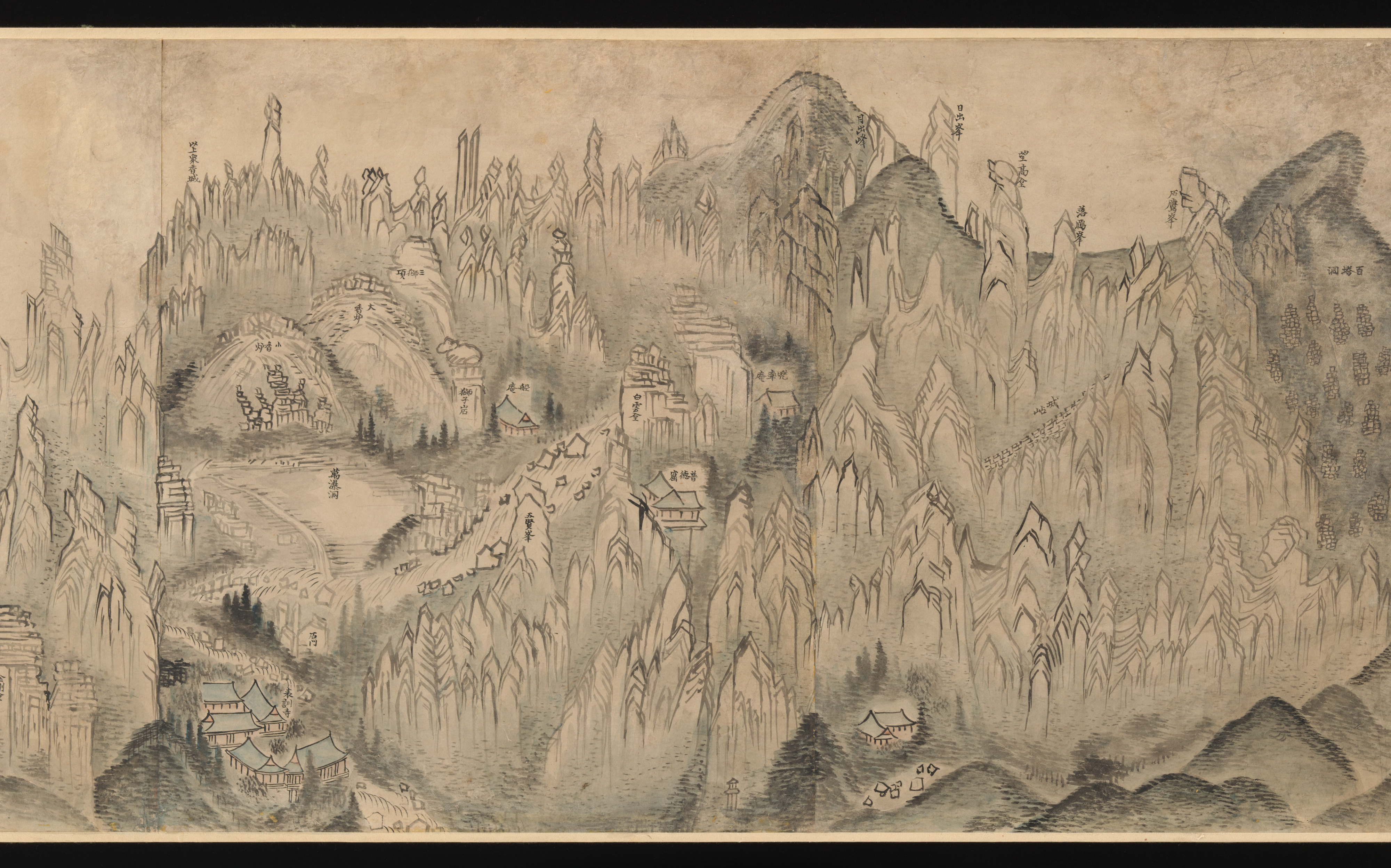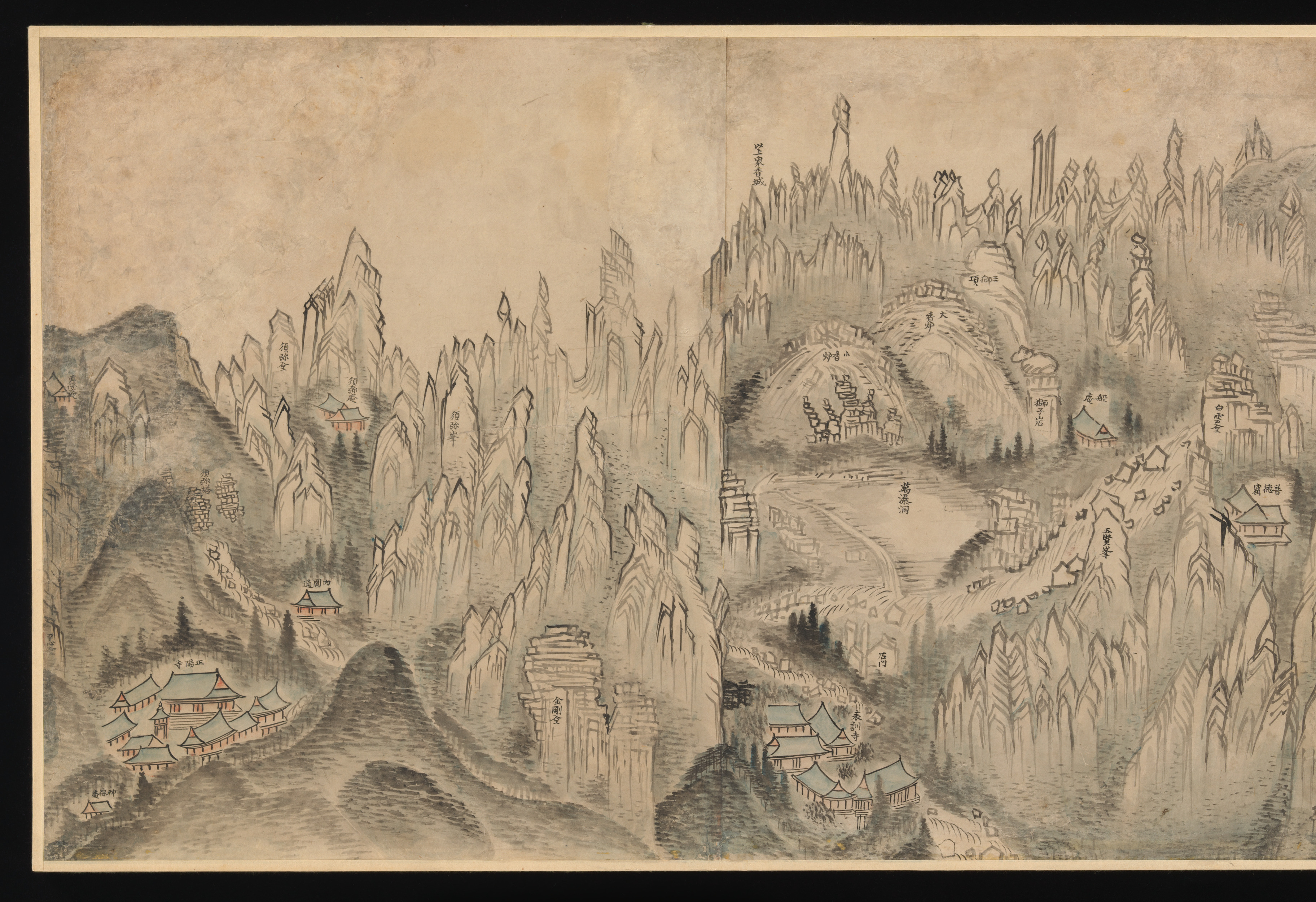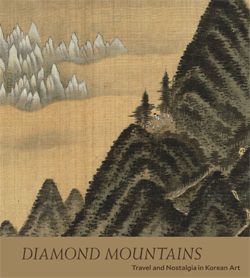General View of Inner Geumgang
Sin Hak-gwon (artist name: Doam) Korean
Not on view
Korean art has a rich tradition of portraying real locations in addition to utopian landscapes. Following the destructive Japanese and Manchu invasions of the late sixteenth and early seventeenth centuries, respectively, there arose a renewed awareness of Korea’s place in East Asia and the peninsula’s natural terrain and historical sites. This panoramic view of Geumgangsan, also known as the Diamond Mountains, unfurls from right to left, showcasing rocky peaks, meandering streams, rolling hills, and Buddhist temples. Notably, the painting identifies forty-six renowned sites by name. Sin Hak-gwon intentionally mirrors the style of Jeong Seon (1676–1759), a celebrated Geumgang artist he deeply admired. However, Sin’s distinctive trademark lies in the double outlines of the spindly peaks that impart a slightly ethereal quality. Artists unable to travel to Geumgang used compositions like this one to satisfy a longing for the revered mountains.
Due to rights restrictions, this image cannot be enlarged, viewed at full screen, or downloaded.
This artwork is meant to be viewed from right to left. Scroll left to view more.











